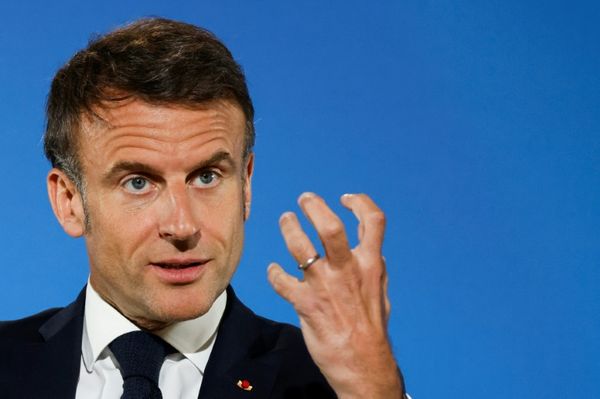
Federal Reserve officials are battling the fastest inflation in four decades, and as they do they are parsing a wide variety of data sources to see what might happen next. If they check in on how executives are describing their companies’ latest financial results, they might have reasons to worry.
It’s not because the corporate chiefs are overly gloomy about their prospects as the Fed aggressively raises interest rates to control rapid inflation. Quite the opposite: Many executives across a range of industries over the last few weeks have said that they expect to see sustained demand. In many cases, they plan to continue raising prices in the months ahead.
That is good for investors — the S&P 500 index gained 8% last month as companies began reporting quarterly profits — but not necessarily welcome news for the Fed, which has been trying hard to slow consumer spending. The central bank has already raised rates five times this year and is expected to do so again Wednesday as part of its campaign to cool off the economy. Although companies have warned that the economy may slow and often talk about a tough environment, many are not seeing customers crack yet.
“While we are seeing signs of economic slowing, consumers and corporates remain healthy,” Jane Fraser, the CEO of Citigroup, told investors recently. “So it is all a question of what it takes to truly tame persistently high core inflation.”
If companies continue to charge more and find that consumers are still willing to pay, it will make inflation harder to stamp out. That could push the Fed to keep up its push to curb momentum — and if officials must do more to wrestle prices down, it could increase the risk of financial turmoil, higher unemployment or other bad outcomes. Although some companies are reporting a nascent slowdown, the signs are far from conclusive.
Demand remains strong despite higher prices.
McDonald’s expects to raise prices by 10% at its restaurants in the United States this year, its leaders said when reporting better-than-expected sales and profits for the third quarter. “I think because of the strength of the brand and the proposition as evidenced by the results, the consumers are willing to tolerate it,” said Chris Kempczinski, the fast-food giant’s CEO.
American Express added customers for platinum and gold cards at a record clip in the United States last quarter, as it reported “great demand” for premium, fee-based products, with younger generations in particular signing up.
“As we sit here today, we see no changes in the spending behaviors of our customers, and our credit metrics continue to be strong with delinquencies and write-offs remaining at low levels even as loan balances are steadily rebuilding,” Stephen J. Squeri, the company’s CEO, told investors.
He added that the company expects continued momentum based on “really, really strong” travel-related bookings.
Hotels, airlines and related businesses have benefited as consumers shift their spending away from goods and toward experiences, giving those companies room to raise prices.
“We’re not seeing any signs that fundamentals are weakening,” Christopher J. Nassetta, the CEO at Hilton Worldwide, said on its earnings call with investors. He noted that “rising demand coupled with historically low industry supply growth should continue to drive strong pricing power.”
Wyndham Hotels reported that the typical demand drop-off in autumn is less pronounced than usual. Uber said that October was set to be its best month ever for ride bookings, thanks in part to the “continued shift of consumer spending from retail back to services,” the company’s CEO, Dara Khosrowshahi, said Tuesday.
At JetBlue, “we’re not seeing any cracks in underlying demand,” Joanna Geraghty, the airline’s chief operating officer, said when describing how it was recovering its earnings after the hit from the pandemic.
Some firms are raising prices to protect their profit margins, and because they can.
PepsiCo raised its sales and profit forecasts for the year, in large part because of consumers’ willingness to pay more for soda and snacks. “One of our goals clearly is to both gain share and to grow margins. And frankly, that’s something that I think we can do,” Hugh F. Johnston, PepsiCo’s chief financial officer, told analysts.
At Colgate-Palmolive, “we felt it was very important to get ahead of the inflationary environment and take as much pricing as we could,” said Noel R. Wallace, the consumer product maker’s CEO. The company raised prices in North America by 9% in the third quarter from a year earlier, up from a 3% bump in the second quarter.
Chipotle Mexican Grill has seen “minimal resistance” to price increases, Brian Niccol, the restaurant chain’s CEO, told investors. In the third quarter, Chipotle increased prices 13% from a year earlier, and it expects prices to be up 15% year-over-year in the fourth quarter.
Incomes matter when it comes to inflation.
As prices rise, many companies are reporting differing behavior between richer and poorer customers.
In developed markets like the United States, there is a “broad swath of consumers” with more savings than they had before the pandemic, said Michael D. Hsu, the CEO of Kimberly-Clark, whose brands include Huggies diapers and Kleenex tissues. The company hasn’t seen a “discernible change in behavior” for those customers, he told investors.
But he also described a “bifurcation in demand,” noting that many consumers who live paycheck to paycheck are buying less or trading down to cheaper brands. “I grew up in one of those households, and I know what it’s like,” Hsu said.
The results from tech giants and others point to an impending slowdown.
The biggest earnings misses came from the tech giants, suggesting that higher inflation and rising interest rates are affecting activity.
Alphabet, the parent of Google, last week reported a big decline in third-quarter earnings, and its executives noted they were seeing less advertising spending in rate-sensitive financial categories like insurance, loans and mortgages.
A few days later, the chip maker Intel announced a $10 billion cost-cutting program and lowered its profit forecast for the year. “It’s just hard to see any points of good news on the horizon,” its CEO, Patrick Gelsinger, told investors.
Demand could begin to wane for more products and services as families spend down their pandemic savings and struggle to keep up with climbing costs, especially if the job market begins to slow.
“The back-to-school season was softer than expected as consumer spending continues to be impacted by ongoing inflationary pressures,” Monish Patolawala, the chief financial officer of 3M, the conglomerate whose products include adhesive tape and Post-it notes. “Looking ahead, we anticipate these impacts to continue throughout the upcoming holiday season.”
Indeed, Mattel, the toymaker behind Barbie and Hot Wheels, cut its profit forecast, with its CEO, Ynon Kreiz, citing “increased volatility heading into the latter part of the year.”
Mattel plans more discounts and promotions to shift unsold inventory, suggesting that for some products, price increases have hit their ceiling.
View original article on nytimes.com
© 2022 THE NEW YORK TIMES COMPANY







